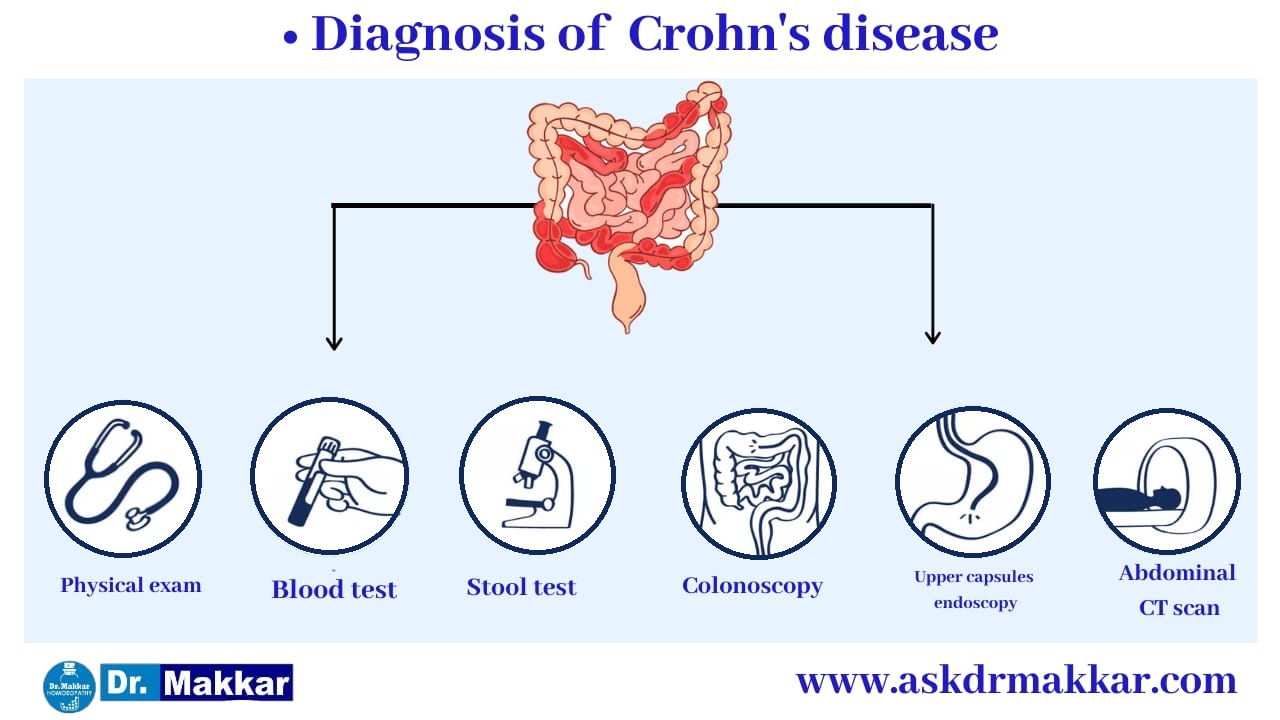
Your doctor will likely use a combination of tests to help confirm a diagnosis of Crohn's disease, including:
Lab tests
Blood tests. Your doctor may suggest blood tests to check for anemia — a condition in which there aren't enough red blood cells to carry adequate oxygen to your tissues — or to check for signs of infection.
Stool studies. You may need to provide a stool sample so that your doctor can test for hidden (occult) blood or organisms, such as parasites, in your stool.
Procedures
Colonoscopy. This test allows your doctor to view your entire colon and the very end of your ileum (terminal ileum) using a thin, flexible, lighted tube with a camera at the end. During the procedure, your doctor can also take small samples of tissue (biopsy) for laboratory analysis, which may help to make a diagnosis. Clusters of inflammatory cells called granulomas, if present, help essentially confirm the diagnosis of Crohn's.
Computerized tomography (CT). You may have a CT scan — a special X-ray technique that provides more detail than a standard X-ray does. This test looks at the entire bowel as well as at tissues outside the bowel. CT enterography is a special CT scan that provides better images of the small bowel. This test has replaced barium X-rays in many medical centers.
Magnetic resonance imaging (MRI). An MRI scanner uses a magnetic field and radio waves to create detailed images of organs and tissues. MRI is particularly useful for evaluating a fistula around the anal area (pelvic MRI) or the small intestine (MR enterography).
Capsule endoscopy. For this test, you swallow a capsule that has a camera in it. The camera takes pictures of your small intestine and transmits them to a recorder you wear on your belt. The images are then downloaded to a computer, displayed on a monitor and checked for signs of Crohn's disease. The camera exits your body painlessly in your stool.
You may still need endoscopy with biopsy to confirm the diagnosis of Crohn's disease. Capsule endoscopy should not be performed if there is a bowel obstruction.
Balloon-assisted enteroscopy. For this test, a scope is used in conjunction with a device called an overtube. This enables the doctor to look further into the small bowel where standard endoscopes don't reach. This technique is useful when capsule endoscopy shows abnormalities but the diagnosis is still in question.